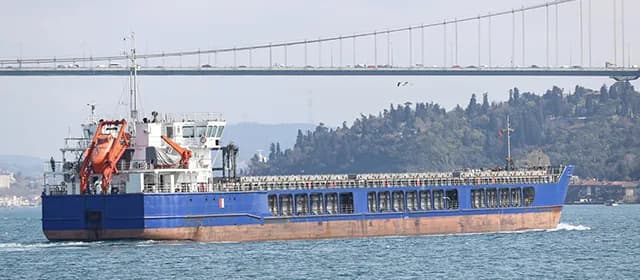As the world races towards a future of autonomous vehicles and cutting-edge mobility solutions, one crucial aspect often overlooked is automotive windscreen glazing. Beyond its functional purpose, windscreen glazing is the unsung hero that seamlessly merges safety, innovation, and design. Imagine a world where windshields become interactive displays, solar-powered energy generators, and even a bridge connecting to the outer world.
So, let's embark on a fascinating realm where the glass becomes a gateway to a thrilling future on the open road.
What is Automotive Windscreen Glazing?
Automotive windscreen glazing is a simple concept that pertains to the glass used for vehicle windows, with "windscreen" referring to the front window. It is a physical barrier in vehicles, providing safety and visibility.
It plays a crucial role in protecting the interior of vehicles from the exterior, thereby reducing energy consumption. Despite being overlooked in the interiors, windscreen glazing is a vital component in ensuring the safety of the occupants.
According to the recent report by Kings Research, the global automotive windscreen glazing market is likely to reach $15.98 billion in revenue by 2030, growing at a CAGR (compound annual growth rate) of 7.89%.
Types of Automotive Windscreen Glazing
Although automotive windshield glass looks similar on the outside to other types of glass, it functions in a completely different manner. There are two main types of windscreen glazing used in the automotive industry. Let's understand them briefly.
- Laminated glass
Laminated glass is a key component in modern car designs. It is made of two layers of glass sheathed in a thin layer of polyvinyl butyral (PVB). This specialized interlayer acts as a strong adhesive, preventing the glass from shattering during the accident.
In automobiles, they are specifically used in windshields due to their unique composition, optical clarity, rugged binding, and toughness. One remarkable benefit of laminated glass is that it acts as a cushion during accidents.
Additionally, it enhances passenger safety by reducing the risk of injuries from flying glass fragments and providing noise reduction and protection against harmful UV rays. Laminated glass is better suited for unpredictable road situations, offering enhanced protection.
- Tempered glass
Tempered glass is a highly durable material used in cars for side windows, as it is created through a controlled heating and cooling process. This process makes the glass ten times more robust than regular glass, allowing it to shatter into tiny, pebble-like pieces when hit.
Tempered glass is used in various applications, including side, rear, and panoramic windows, due to its resilience against accidents and ability to crumble safely. It offers significant advantages, including reduced glare, a stable barrier, sunroofs, and panoramic roofs for clear views and natural light while maintaining safety.
Why are Windscreen Glazing Systems Important in the Automotive Industry?
Vehicle manufacturers are increasingly using prefabricated glazing systems instead of single glass fragments. Let’s take a closer look.
- Encapsulation involves injection molding of polymer cuts to fit the vehicle body, improving airflow, reducing water and dirt entry points, and enhancing the final design.
- Extrusion is an industrial process using PVC or recyclable plastics, but it is heavy, expensive, and can result in an uneven texture or heterogeneous appearance.
- Bonding uses adhesives and fasteners, adding an additional step to the manufacturing process and increasing the total cost.
- Assembly involves fixing the glass by applying location clips and other hardware.
These processes collectively ensure superior visibility and safety for passengers in the vehicle.
Top 3 Well-known Companies in the Automotive Windscreen Glazing Industry
Below are top 3 renowned leaders in the automotive windscreen glazing industry, offering high-quality products and inventive solutions to meet the demands of the automotive sector.
1. Covestro
Covestro is an international supplier of high-performance polymers and ingenious solutions for the automotive industry. It is recognized for its wide range of products in automotive windscreen glazing, including polycarbonate materials. Covestro's Makrolon is an innovative polycarbonate glazing solution that provides exceptional optical clarity, collision resistance, and lightweight properties, making it an ideal choice for automotive applications.
2. Guardian Glass
Guardian Glass is a global leader in float glass and fabricated glass product manufacturing. It offers a variety of automotive glazing solutions, including windshield glass.
Guardian Glass's innovative automotive windscreen product, Guardian® Solar Management Glass (SMG), offers acoustic insulation and solar control. It is well-known for its high durability, clear visibility, and excellent solar heat protection with more than 70% light transmission.
3. Saint-Gobain Sekurit
Saint-Gobain launched its new subsidiary, Sekurit, a multinational company specializing in the design and production of glazing systems and innovative solutions. It is well-known for its innovative contribution to customized automotive glazing systems, including tinted glazing and polymer glazing.
Saint-Gobain's automotive windscreen solutions focus on safety, comfort, and energy efficiency, incorporating features such as noise reduction, UV protection, and head-up display compatibility.
Bottom Line
Automotive windscreen glazing is a critical component that goes beyond its practical purpose. It serves as a catalyst for safety, innovation, and design in the fast-evolving world of autonomous vehicles and cutting-edge automotive solutions.
As we envision windshields as interactive displays, solar-powered generators, and shields for safety, the possibilities for the future of this innovative windscreen glazing are boundless.
With companies like Covestro, Guardian Glass, and Saint-Gobain leading the way, we can anticipate a thrilling journey ahead, where the glass becomes the gateway to an extraordinary driving experience. As we move towards the future, it shows remarkable potential, propelling us toward a safer, more innovative, and visually captivating world on the open road.


.webp&w=3840&q=75&dpl=dpl_56K6QShhC9wZXpDPpsYZsVak7UVB)

